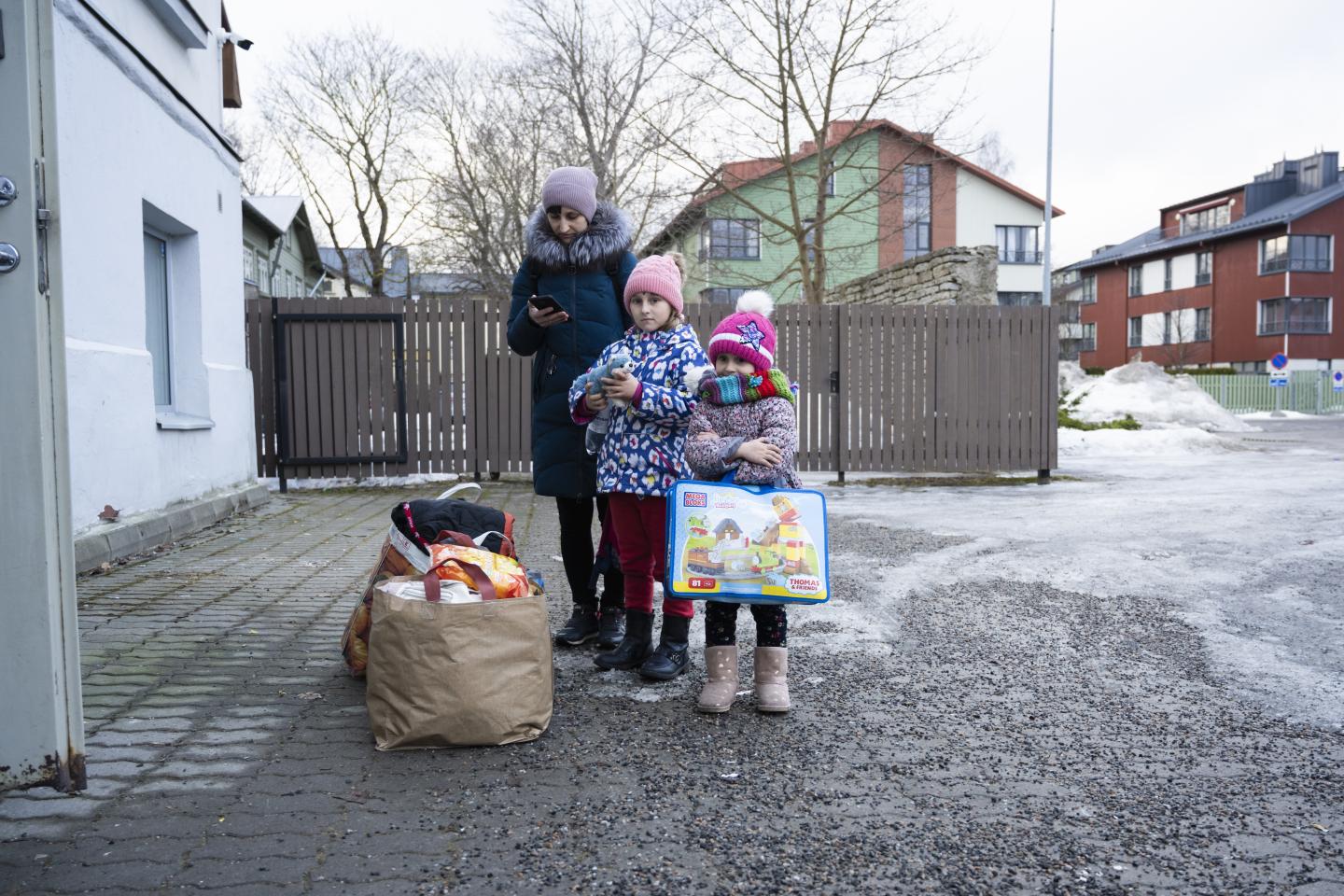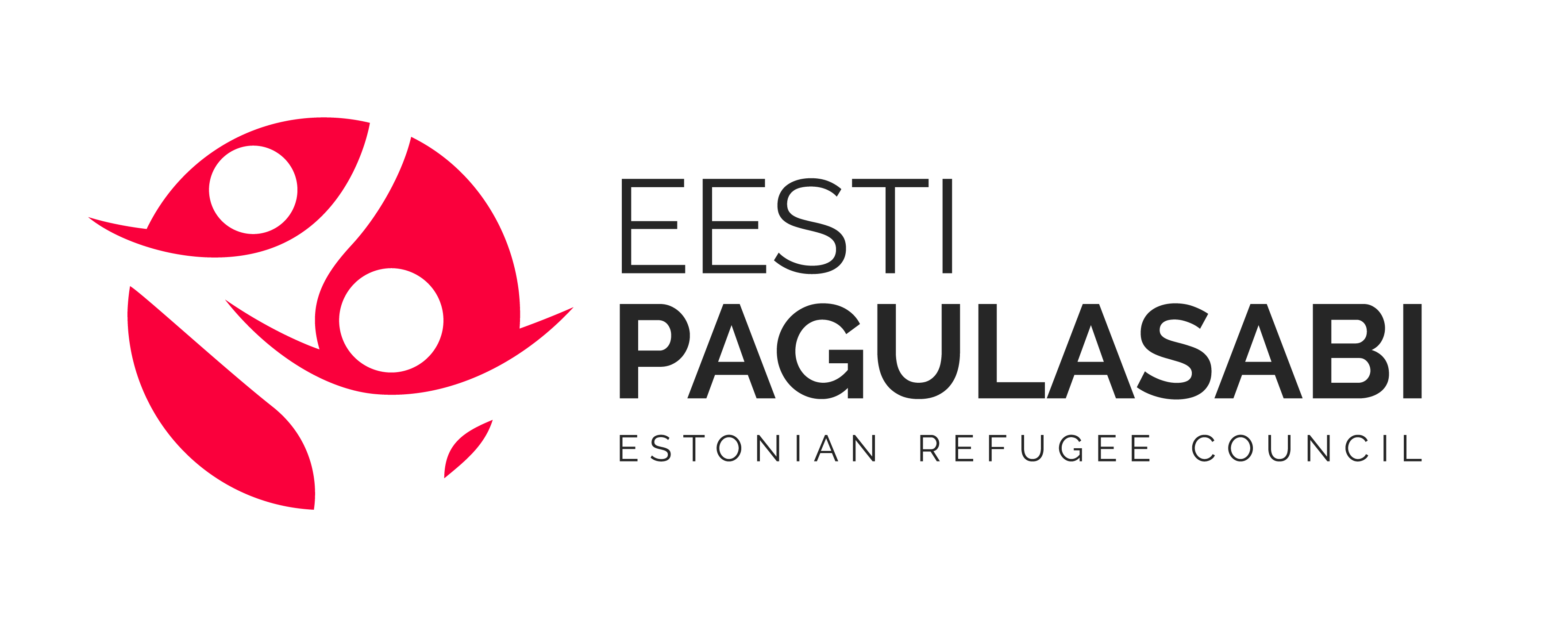
HOW WE ORGANIZE: ACCOMMODATION FOR UKRAINIAN WAR REFUGEES
"I have offered my home - the rooms are warm and ready. At the same time, I read in the media that there is a shortage of accommodation for refugees. However, no refugee has reached me. Why?”
If you have offered your home on the website of Estonian Refugee Council and are ready to accommodate someone, then know that we have stored and systematized your data according to the location and other parameters (whole apartment, room in the apartment, whether pets are allowed, etc.). We have forwarded this information to the Estonian National Social Insurance Board responsible for refugee accommodation and to your local government, who can bring you together with those in need if necessary.
Estonian Refugee Council mediates the accommodation offered by private individuals to Ukrainian refugees. During a month, we have brought accommodation providers directly together with 177 Ukrainian households (about 700 people). In the first place we prefer accommodations that are long-term and where a war-torn family can stay privately (separate apartment, house, part of a house), but of course refugee counsellors also contact others depending on the conditions and needs, and mediate suitable accommodations to refugees.
Larger accommodation offers (for example recreation centres, dormitories) are regularly forwarded to the Estonian National Social Insurance Board responsible for refugee accommodation and to the respective local governments, where the accommodation is located.
We have an intensive exchange of information with several local governments, and the accommodations offered by private individuals are taken to use quickly. However, as a whole, everything may still take time, depending on the number of people in need and governmental accommodations, as well as the capability of local governments. In cooperation with the Estonian National Social Insurance Board, we are developing a solution for systematically and thoughtfully offering long-term accommodation in accommodation centres. We are pleased that the couple of weeks long negotiations are reaching results and we hope that management will become smoother and faster for everyone.
Background information
Since the 27th of February, Estonia has received a total of 21 640 Ukrainian war refugees (as of March 21).
In various accommodations are a total of 6011 people, of which 2139 are children.
At present, about 28% of the war refugees who have arrived in Estonia need temporary accommodation. The vast majority have met their family or friends/colleagues in Estonia, who provide them with shelter and support. There are also those who arrive to accommodations at night exhausted but move on from there the next day to their family. Therefore, the percentages shown may be lower in reality.
In Estonia, the Estonian National Social Insurance Board (ENSIB) is responsible for providing temporary accommodation for refugees. Currently, refugees can stay in the accommodations for up to a month.
Are there enough vacant accommodations?
The number of 10 000 beds has been repeatedly covered by the media - a number displayed as a result of a public procurement, which indicates the capability to accommodate refugees for the first month. According to statistics, just over half of the 10 000 places have been filled. Yet in the news it sounds like there’s a lack of accommodations.
One of the reasons is the fact that, although ENSIB carried out the respective procurement, the accommodation was not actually booked in advance. So many of the rooms are already occupied by someone else and refugees can’t actually be accommodated there. In the daily work of the Refugee Council, this means that it’s often necessary to call the accommodations at night in advance to find out if and how many more places there are and, if necessary, to divert buses all over Estonia. Unfortunately, this is accompanied by a lot of confusion and additional burden primarily for those who should get the most peace and rest: refugees. For our part, we hope that the problem will be resolved as soon as possible in the respective institutions.
Refugee Council’s actions in mediating accommodation
Estonian Refugee Council started collecting and mapping data of kind Estonians homes and other accommodations on 25th of February through the website section “I offer help”. By now, about 3000 accommodation providers have accumulated and more are adding on every day.
We have 15 volunteer data processors who review and systematize offers. Offers range from larger accommodations and apartments to rooms. Places where whole families are welcome, places where there is room for one or two people, places where you can come with pets, places where you can also immediately start to work. There are those who offer space for free, those who want rent or utilities to be covered. Accommodation providers who can accommodate refugees from a few weeks to a year. Unfortunately, there are also those among the gold hearted who are only out for self-interest. In short - from wall to wall.
At the moment, Tallinn, Tartu, Rakvere and Pärnu have received the most refugees. Firstly, official reception points are in these cities. Secondly, we can only speculate that many people who have fled from Ukrainian cities prefer to live in Estonia in cities as well. In other words, in an environment which they are used to and from which there’s faster access to services, including the registration required to enter the labour market and applying for a personal identification code at the PBGB.
Ukrainians thoughts of moving to a private residence are overshadowed by concerns about how to make a living in the near future (when there’s no temporary protection yet and access to the labour market is limited). While accommodation may initially be offered free of charge or for a symbolic price or utility costs, a practical Ukrainian also fears that they will not be able to buy food and other necessities for their family. Although we constantly explain to refugees how small Estonia is, preference is still given to housing in the city.
However, this does not mean that all refugees want to stay in cities. Primarily important is a safe and secure environment. And the opportunity to work, put children in kindergarten, get access to health care. After all, the vast majority of those who have arrived here are the most vulnerable target group: women and children. We will continue to be there for them, and we hope you will too. Thank you everyone!
Header image: Patrik Tamm
